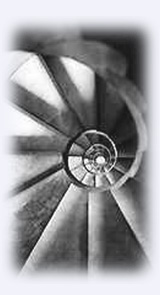 |
ViolenceIn Public Places ...In our schoolsIntroductionSchools have been historically, and continue to be, the sites of abuse against children, whether at the hands of teachers, administrators or other students. The institutional power embodied by schools, and the churches/states that run them, dwarfs the agency of a child. Bullying among students can take the form of physical abuse, verbal abuse or emotional abuse, in person or online. Bullying, broadly defined, is when children discriminate against each other based on race, class or socio-economic status, sexuality, gender, ability, size or looks. It is a clear example of how the powerless participate in maintaining larger structures of power and inequality. Institutional violence is perpetrated by schools through racist and other oppressive policies. An example is the ‘Safe Schools Act” in Ontario, Canada. Rooted in racist perceptions of young black men as violent, this Act targeted racialised youth, further disadvantaging them in the school system. Schools and school systems also provide abusive teachers with power and access to students. The way disability has been stigmatized provides one of the starkest illustrations of violence perpetrated by and in schools. The failure of educational institutions to respond to students with disabilities has in different moments been a profound one, and a moral one. Consider a person who has cerebral palsy and speaks with difficulty and who is already dealing with being seen as “other” in her family, who then finds that she is assumed not to be too bright at school and is put in the remedial class. Now she is not getting the chance to learn at an appropriate level, and people often don’t bother to wait long enough to let her finish her sentences or try to understand her. She is laughed at by classmates and on the street. These violences build layer upon layer and impact her sense of self and possibilities in her future, or the lack of them. Her school environment has colluded beautifully with all this, as it has historically colluded with the dehumanizing objectification of all that is “other,” of those with intellectual and learning disabilities, and all manner of cognitive and physical differences. Institutions are also often the tools used by the ongoing projects of colonialism and cultural genocide. A Canadian example is the vicious legacy of residential schools visited upon aboriginal communities. Over the 19th and well into the 20th century, about 150 000 Aboriginal, Métis and Inuit children were removed from their communities and forced to attend church-run, government-funded schools, the sites of an aggressive assimilation policy aimed at eradicating traditional languages and ways of life. The intersection of race and gender in these projects are evident in this description and analysis by Marlene Starr, a survivor of the residential school system:
Violence experienced within or perpetrated by a school can cause children to associate learning with violence. Survivors of school-based violence may experience difficulty learning, particularly in a formal classroom.
|
 |
| Learning & Violence Home |
| BUILDING AN UNDERSTANDING: • The problem • Violence • Impact |
| EXPLORING POSSIBILITIES: • Learning processes • Helping yourself learn • Helping others learn • Learning to teach |
| CREATING CHANGE: • Changing education • Where in the world • Taking care of self |
| IMAGINING A FUTURE: • Dreams of a different world |
| Contact: jenny@learningandviolence.net |